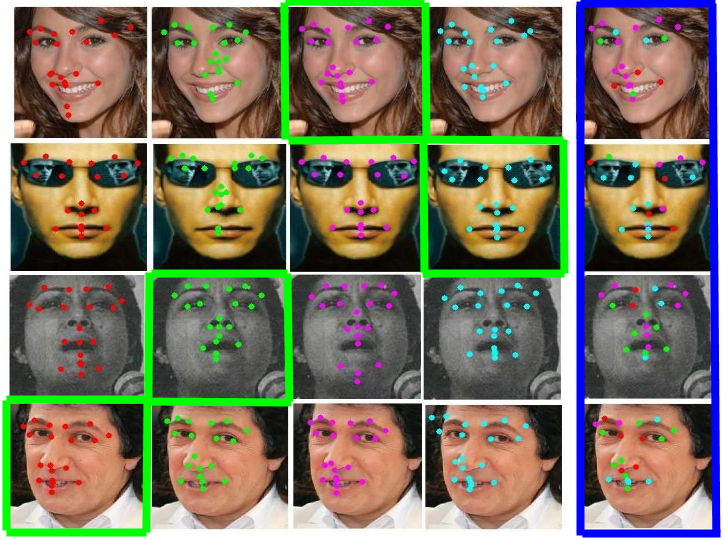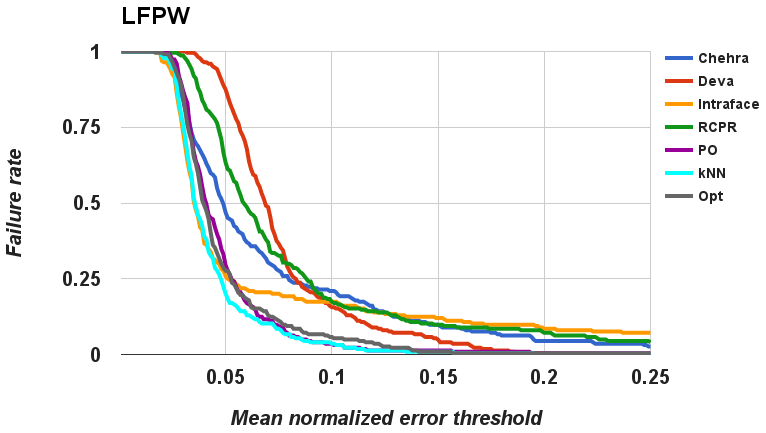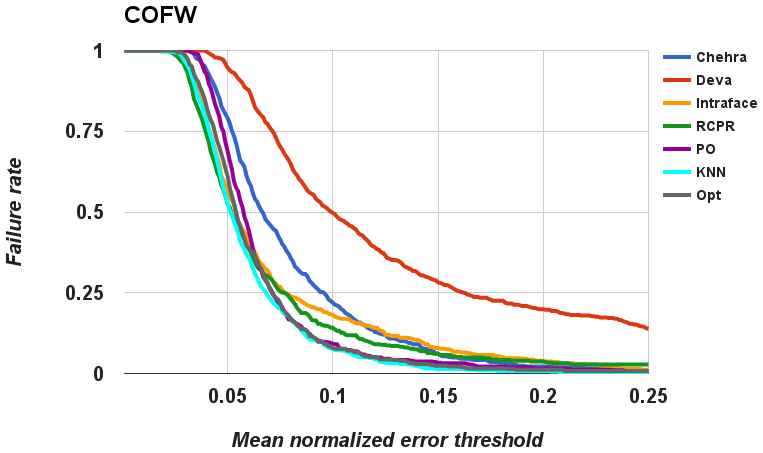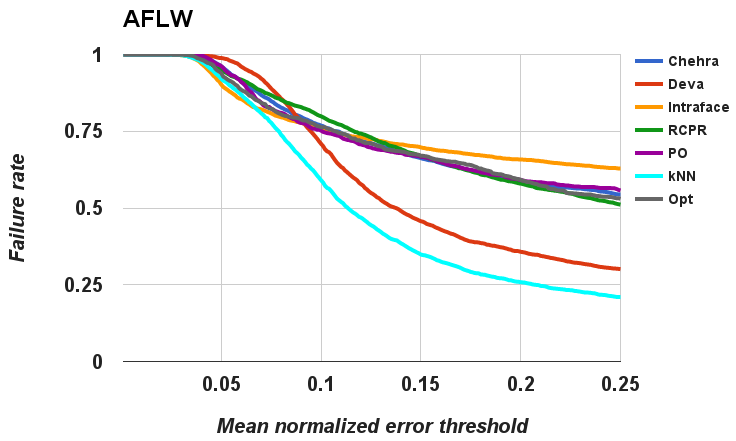Face Fiducial Detection by Consensus of Exemplars

Abstract
Facial fiducial detection is a challenging problem for several reasons like varying pose, appearance, expression, partial occlusion and others. In the past, several approaches like mixture of trees , regression based methods, exemplar based methods have been proposed to tackle this challenge. In this paper, we propose an exemplar based approach to select the best solution from among outputs of regression and mixture of trees based algorithms (which we call candidate algorithms). We show that by using a very simple SIFT and HOG based descriptor, it is possible to identify the most accurate fiducial outputs from a set of results produced by candidate algorithms on any given test image. Our approach manifests as two algorithms, one based on optimizing an objective function with quadratic terms and the other based on simple kNN. Both algorithms take as input fiducial locations produced by running state-of-the-art candidate algorithms on an input image, and output accurate fiducials using a set of automatically selected exemplar images with annotations. Our surprising result is that in this case, a simple algorithm like kNN is able to take advantage of the seemingly huge complementarity of these candidate algorithms, better than optimization based algorithms. We do extensive experiments on several datasets, and show that our approach outperforms state-of-the-art consistently. In some cases, we report as much as a 10% improvement in accuracy. We also extensively analyze each component of our approach, to illustrate its efficacy.
CONTRIBUTIONS
- Our approach attempts the problem of fiducial detection as a classification problem of differentiating between the best vs the rest among fiducial detection outputs of state-of-the-art algorithms. To our knowledge, this is the first time such an approach has been attempted.
- Since we only focus on selecting from a variety of solution candidates, this allows our pre-processing routine to generate outputs corresponding to a variety of face detector initialization, thus rendering our algorithm insensitive to initialization unlike other approaches.
- Combining approaches better geared for sub-pixel accuracy and algorithms designed for robustness leads to our approach outperforming state-of-the-art in both accuracy and robustness.
Method

Code and Dataset
Code.
We evaluate our algorithms on three state of the art datasets LFPW, COFW and AFLW.
In case of queries/doubts, please contact
Related Publications
Mallikarjun B R, Visesh Chari, C. V. Jawahar , Akshay Asthana - Face Fiducial Detection by Consensus of Exemplars Proceedings of the IEEE Winter Conference on Applications of Computer Vision(WACV), 2016. [PDF]
Results

 |
 |
 |
